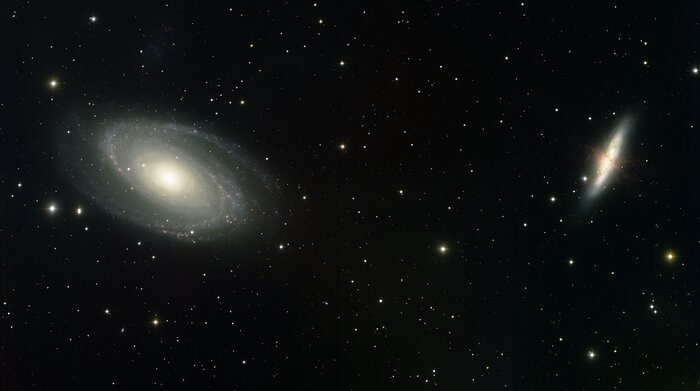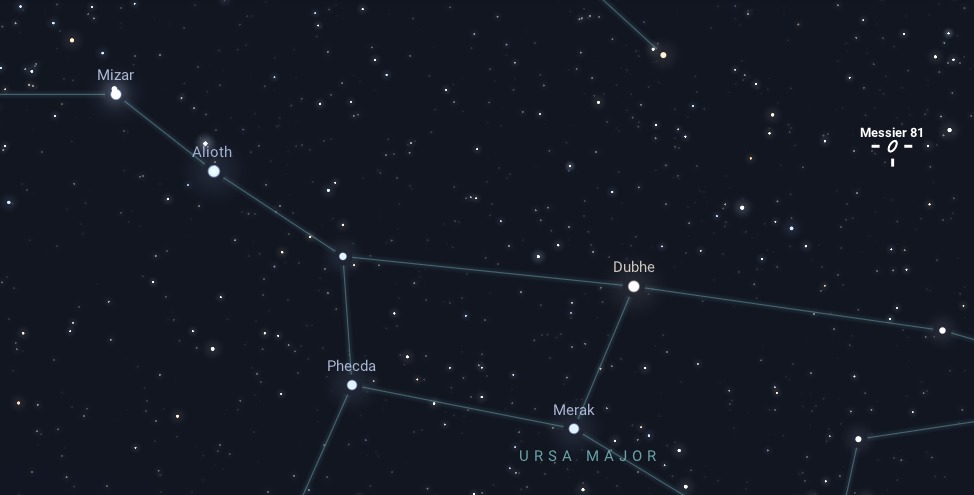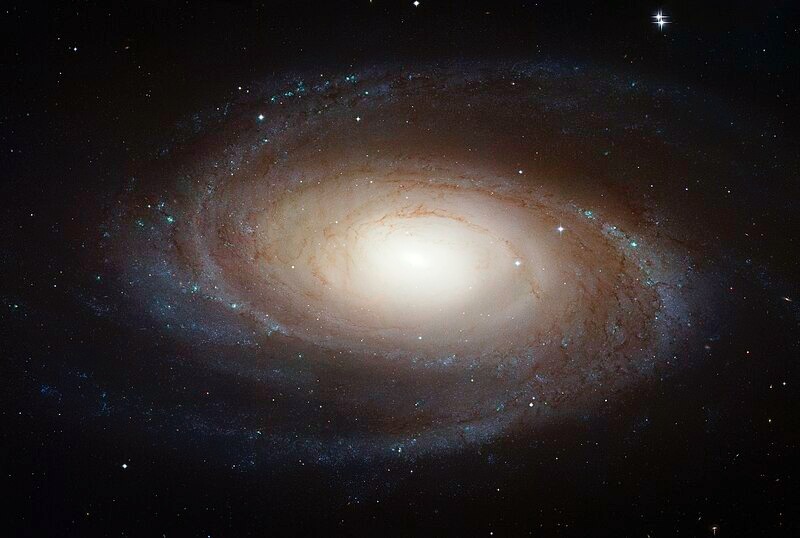M81, also known as Bode’s Galaxy or NGC 3031, is located in the constellation Ursa Major (the Great Bear), which is easily visible from the northern hemisphere. Like other notable galaxies it attracts significant attention from astronomers and star gazers alike. Here’s some information about M81:
Location
Bode’s Galaxy is a prominent member of the Messier catalog, and is easily found near the handle of the Big Dipper asterism. The galaxy is approximately 11.8 million light-years away from Earth. It also has several satellite galaxies, including M82 (a nearby irregular galaxy) and several dwarf galaxies.

Structure
M81 has a diameter of about 90,000 light-years and is estimated to contain around 250 billion stars. It is classified as a spiral galaxy and is one of the brightest galaxies in the Messier catalog. It has a bright central bulge surrounded by spiral arms that contain regions of active star formation, as well as dust and gas clouds.
The spiral arms are rich in young, hot, blue stars, which form from the dense molecular gas found within these regions. These arms also contain numerous star-forming regions and clouds of interstellar gas and dust, where new stars are actively being born. The pattern of the arms is tightly wound, contributing to its “grand-design” classification.
At the center of M81 lies a prominent central bulge, which consists primarily of older, redder stars. These stars are less active in terms of star formation compared to the outer spiral arms. The bulge also contains a supermassive black hole, estimated to have a mass of about 70 million times that of the Sun. The overall stellar population of M81 spans a wide range, from young, massive stars in the arms to ancient stars in the core. This mixture, along with the presence of dark matter that influences its rotation and structure, makes M81 a dynamic and complex galaxy.
Observation
M81 (seen together with the “Cigar Galaxy” M82) is a popular target for amateur astronomers due to its brightness and relative proximity. It can be observed with binoculars or small telescopes under dark skies. With larger telescopes, its spiral structure and details become more apparent.
The best months to observe M81 in the northern hemisphere are generally from late winter to late spring, covering the months of February to May. During this period, Ursa Major rises earlier in the evening and remains visible for longer durations, providing ample opportunity for observers to locate and observe M81.
In the southern hemisphere, M81 is visible but may appear lower in the sky and be more challenging to observe. Observers in the southern hemisphere can still try to observe M81 during the same period, but it may be better viewed from regions with higher latitudes.
As always, the best viewing conditions for observing celestial objects like M81 include clear skies, minimal light pollution, and stable atmospheric conditions.


